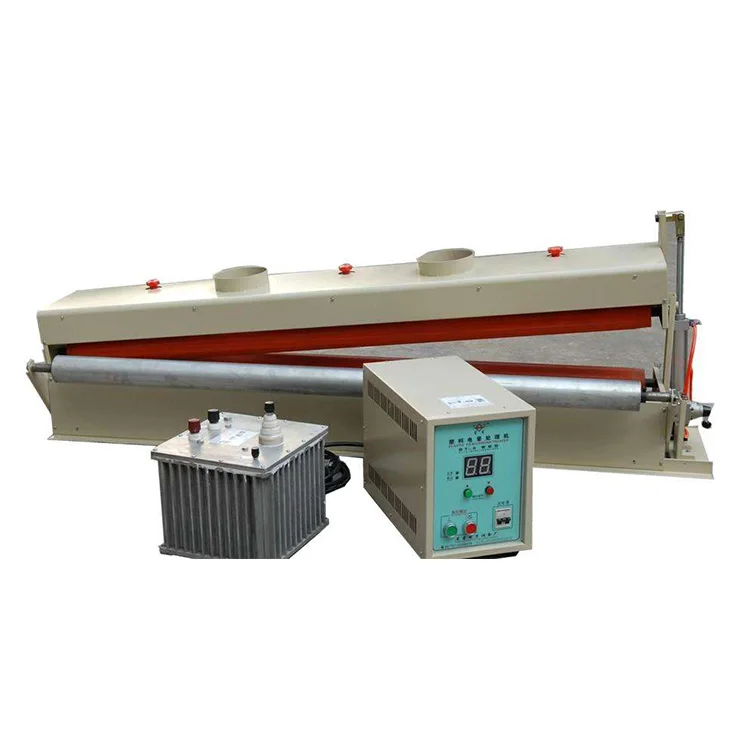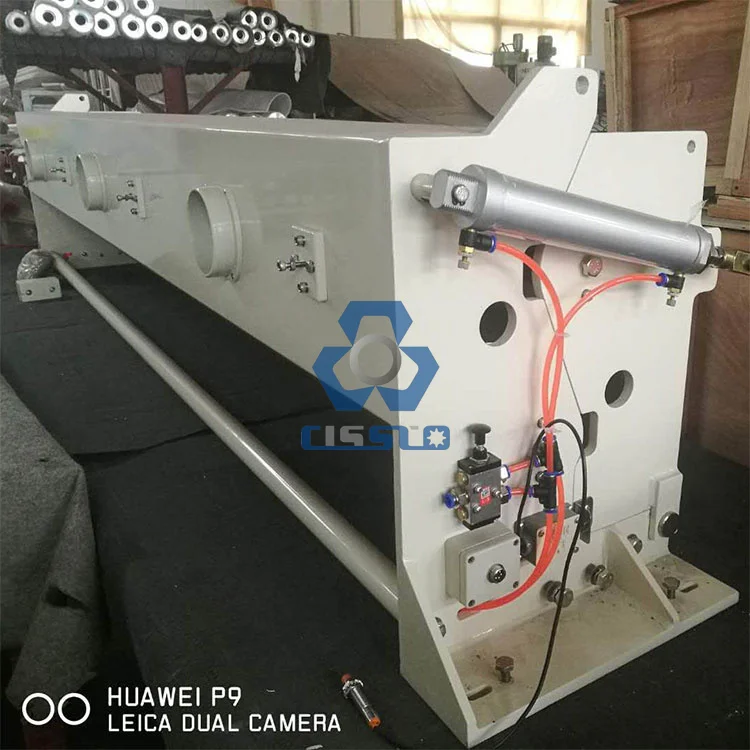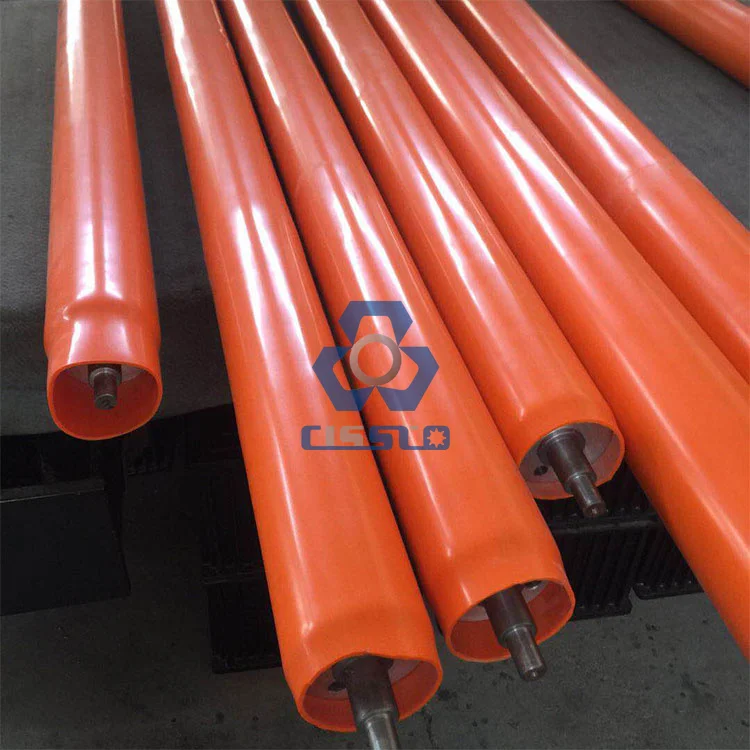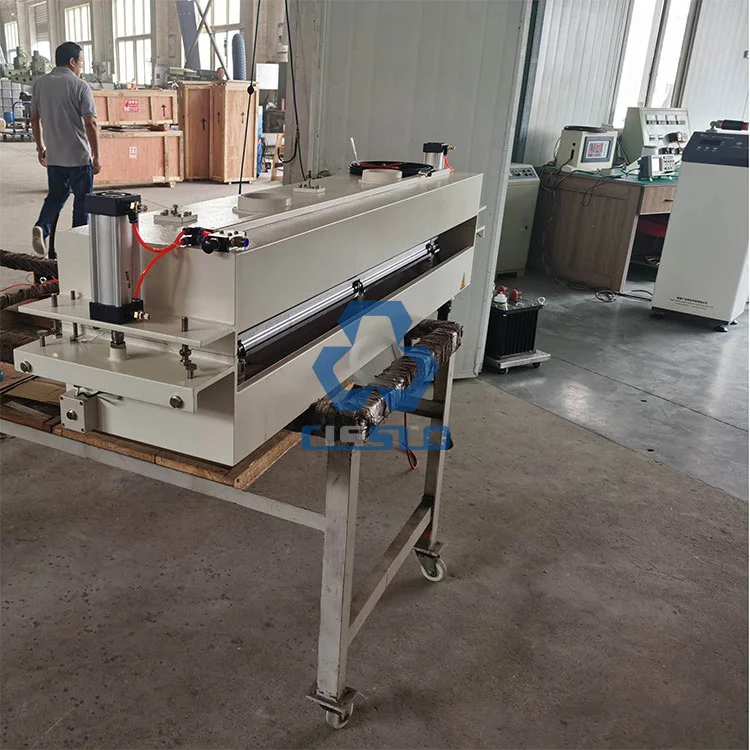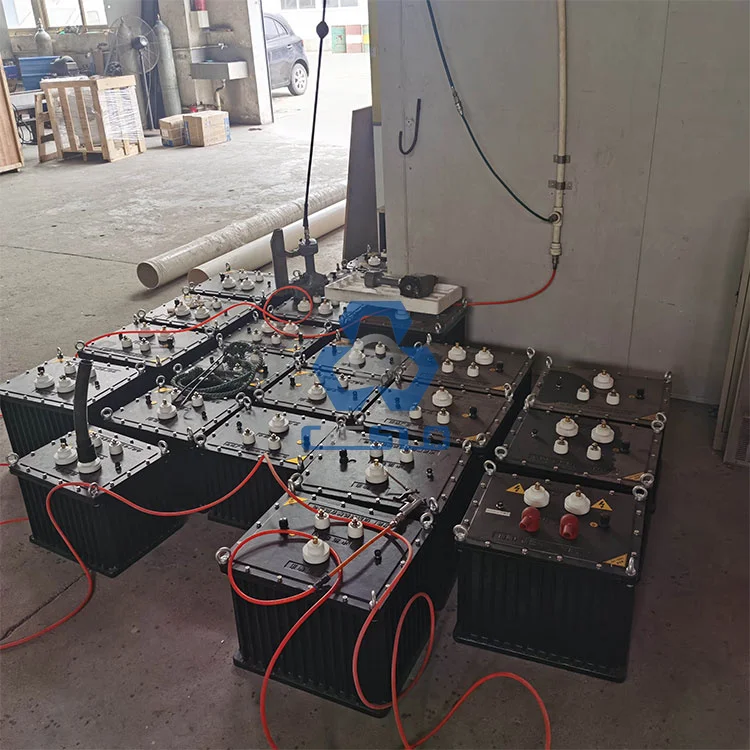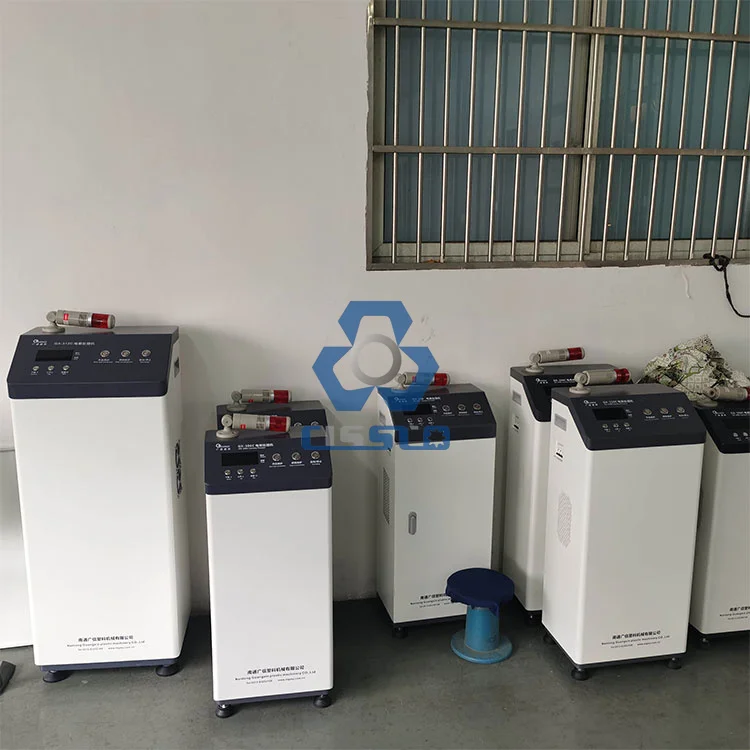Односторонняя машина для обмотки пластиковой пленки PP PE
- Категория: Other Plastic & Rubber Machinery >>>
- Поставщик: Cissco,Machinery,Co.,Ltd.
Поделиться:
Описание и отзывы
Трекер стоимости
| Месяц | Минимальная цена | Макс. стоимость |
|---|---|---|
| Sep-17-2025 | 0.72 $* | 0.64 $* |
| Aug-17-2025 | 0.30 $* | 0.51 $* |
| Jul-17-2025 | 0.72 $* | 0.44 $* |
| Jun-17-2025 | 0.20 $* | 0.28 $* |
| May-17-2025 | 0.24 $* | 0.84 $* |
| Apr-17-2025 | 0.59 $* | 0.49 $* |
| Mar-17-2025 | 0.48 $* | 0.93 $* |
| Feb-17-2025 | 0.5 $* | 0.30 $* |
| Jan-17-2025 | 0.53 $* | 0.64 $* |
Характеристики
Machine Descriptions

Corona treatment machine
I. WHY CORONA TREATMENT IS ESSENTIAL TO YOUR BUSINESS
“The problem with writing or printing on plastic films is well known. You have a plastic bag and you would like to write on it with a pen, but unfortunately the ink doesn’t stick to the plastic since the untreated plastic has a structure, which makes it impossible to both write and print on due to poor adhesion. Corona treatment is the solution to this well know problem.”
II. Corona treatment is a high frequency discharge that increases the adhesion of a plastic surface.
Whether a liquid wets a material good or poorly depends primarily on the chemical nature of both the liquid and the substrate.
Wetting is defined as the ratio between the surface energies of the liquid and substrate.
In general the following rule is true: “A material will be wetted, if it’s surface energy (=dyn/cm) is higher than the surface energy of the liquid. If not, there will be an adhesion problem. The figure below shows the basic dyne-level of a material and the required dyne-level in the different applications.
III. HOW TO AVOID ADHESION PROBLEMS
The pre-treatment offered by Corona treatment is necessary to obtain sufficient wetting and adhesion on plastic films or metallic foils before the printing, laminating or coating. A Corona discharge unit is the solution to optimize the wetting and adhesion.
This Corona technique has proved to be both highly effective, cost-effective and can take place in-line.
IV. WHAT IS CORONA TREATMENT?
Plastic is a man-made synthetic material, which contains long homogeneous molecular chains that form a strong and uniform product.
The chains of molecules are normally joined end to end forming even longer chains, leaving only a few open chain ends, thus providing only a small amount of bonding points at the surface. The small amount of bonding points cause the low adhesion and wettability, which is a problem in converting processes. When the Danish engineer and founder of Vetaphone, Verner Eisby, was asked about a solution to this problem, he came up with a theory that that a high frequency charge would provide both a more efficient end controllable method of increasing the adhesion and wettability of a plastic surface.
During corona discharge treatment, electrons are accelerated into the surface of the plastic causing the long chains to rupture, producing a multiplicity of open ends and free valences are formed.
The ozone from the electrical discharge creates an oxygenation, which in turn forms new carbonyl groups with a higher surface energy. The result is an improvement of the chemical connection (dyn/cm) between the molecules in the plastic and the applied media/liquid. This surface treatment will not reduce or change the strength. Neither will it change the appearance of the material. The Corona only changes the top molecule chains, which is 0.00001 micron thick.
V. DETERMINATION OF TREATMENT LEVEL
The effectiveness of the Corona treatment depends on the specific material being used. Different materials have different characteristics and different amounts of slip and additives, which will determine the effect of the Corona treatment. There are no limits with regard to the materials that can be corona treated. However, the required intensity of the treatment (watt/min/m2) may vary significantly. The treatment level can be calculated by using the following formula:
Power (watt) = T x S x W x M
P = Total Power (Watt) required
T = Number of sides to Treat (single/double sided)
S = Line Speed (in metres per minute)
W = Film Width (in metres)
M = Material factor (required Watt per m² per minute)
The exact value is best determined by testing a sample of the actual film that is used for a specific application
VI. DURABILITY
Over time the obtained dyne-level will decrease and it can be necessary to corona treat the material again just before use. When a material contains slip the dyne-level will fall faster, as well as thicker and older film stocks are more difficult to treat as slip agents may have migrated to the surface. Also storage conditions and temperatures can affect the decay of the Corona treatment. Generally speaking, the more difficult a material is to treat the quicker it is likely to decay with time. It has been established that film with very high slip additives (over 1200 ppm) can be totally resistant to printing just 24 hours after treatment, and it may be necessary to process the film immediately following treatment, or boost the treatment in line with the printer.
Material which has not been treated under extrusion can be difficult to treat afterwards. Therefore it is recommended to treat film just after the extrusion, and then use a refreshment treatment just before the liquid/media is supplied to the surface.
VII. CHARACTERISTICS OF OUR CORONA TREATER
1. It adopts the imported driver circuit and power organ IGBT and special drive-circuit.
2. It looks the operating frequency automatically.
3. It has the function of soft-start, which can reduce the pollution to the power network and harm to the equipment.
4. It has kinds of protection such as phase absence, phases wrong, over input voltage over current.
5. The protections of stop-running and rake-opening prevent the roller from burning.
“The problem with writing or printing on plastic films is well known. You have a plastic bag and you would like to write on it with a pen, but unfortunately the ink doesn’t stick to the plastic since the untreated plastic has a structure, which makes it impossible to both write and print on due to poor adhesion. Corona treatment is the solution to this well know problem.”
II. Corona treatment is a high frequency discharge that increases the adhesion of a plastic surface.
Whether a liquid wets a material good or poorly depends primarily on the chemical nature of both the liquid and the substrate.
Wetting is defined as the ratio between the surface energies of the liquid and substrate.
In general the following rule is true: “A material will be wetted, if it’s surface energy (=dyn/cm) is higher than the surface energy of the liquid. If not, there will be an adhesion problem. The figure below shows the basic dyne-level of a material and the required dyne-level in the different applications.
III. HOW TO AVOID ADHESION PROBLEMS
The pre-treatment offered by Corona treatment is necessary to obtain sufficient wetting and adhesion on plastic films or metallic foils before the printing, laminating or coating. A Corona discharge unit is the solution to optimize the wetting and adhesion.
This Corona technique has proved to be both highly effective, cost-effective and can take place in-line.
IV. WHAT IS CORONA TREATMENT?
Plastic is a man-made synthetic material, which contains long homogeneous molecular chains that form a strong and uniform product.
The chains of molecules are normally joined end to end forming even longer chains, leaving only a few open chain ends, thus providing only a small amount of bonding points at the surface. The small amount of bonding points cause the low adhesion and wettability, which is a problem in converting processes. When the Danish engineer and founder of Vetaphone, Verner Eisby, was asked about a solution to this problem, he came up with a theory that that a high frequency charge would provide both a more efficient end controllable method of increasing the adhesion and wettability of a plastic surface.
During corona discharge treatment, electrons are accelerated into the surface of the plastic causing the long chains to rupture, producing a multiplicity of open ends and free valences are formed.
The ozone from the electrical discharge creates an oxygenation, which in turn forms new carbonyl groups with a higher surface energy. The result is an improvement of the chemical connection (dyn/cm) between the molecules in the plastic and the applied media/liquid. This surface treatment will not reduce or change the strength. Neither will it change the appearance of the material. The Corona only changes the top molecule chains, which is 0.00001 micron thick.
V. DETERMINATION OF TREATMENT LEVEL
The effectiveness of the Corona treatment depends on the specific material being used. Different materials have different characteristics and different amounts of slip and additives, which will determine the effect of the Corona treatment. There are no limits with regard to the materials that can be corona treated. However, the required intensity of the treatment (watt/min/m2) may vary significantly. The treatment level can be calculated by using the following formula:
Power (watt) = T x S x W x M
P = Total Power (Watt) required
T = Number of sides to Treat (single/double sided)
S = Line Speed (in metres per minute)
W = Film Width (in metres)
M = Material factor (required Watt per m² per minute)
The exact value is best determined by testing a sample of the actual film that is used for a specific application
VI. DURABILITY
Over time the obtained dyne-level will decrease and it can be necessary to corona treat the material again just before use. When a material contains slip the dyne-level will fall faster, as well as thicker and older film stocks are more difficult to treat as slip agents may have migrated to the surface. Also storage conditions and temperatures can affect the decay of the Corona treatment. Generally speaking, the more difficult a material is to treat the quicker it is likely to decay with time. It has been established that film with very high slip additives (over 1200 ppm) can be totally resistant to printing just 24 hours after treatment, and it may be necessary to process the film immediately following treatment, or boost the treatment in line with the printer.
Material which has not been treated under extrusion can be difficult to treat afterwards. Therefore it is recommended to treat film just after the extrusion, and then use a refreshment treatment just before the liquid/media is supplied to the surface.
VII. CHARACTERISTICS OF OUR CORONA TREATER
1. It adopts the imported driver circuit and power organ IGBT and special drive-circuit.
2. It looks the operating frequency automatically.
3. It has the function of soft-start, which can reduce the pollution to the power network and harm to the equipment.
4. It has kinds of protection such as phase absence, phases wrong, over input voltage over current.
5. The protections of stop-running and rake-opening prevent the roller from burning.
Machine Specifications
Type | Input voltage | Operation frequency | The Max. power | The Max. treating width | Application |
GX-101 | AC220V | 10-25KHZ | 1KW | 65CM | Plastic film, metal foil, Plastic sheet |
GX-102 | AC220V | 10-25KHZ | 2KW | 100CM | |
GX-103 | AC220V | 10-25KHZ | 3KW | 120CM | |
GX-304 | AC380V | 19KHZ | 4KW | 200CM | |
GX-306 | AC380V | 19KHZ | 6KW | 200CM | |
GX-308 | AC380V | 15-25KHZ | 8KW | 200CM | |
GX-310 | AC380V | 15-25KHZ | 10KW | 200CM | |
GX-315 | AC380V | 15-25KHZ | 15KW | 200CM | |
GX-320 | AC380V | 15-25KHZ | 20KW | 200CM | |
GX-B1 | AC220V | 12KHZ | 1000W | 10-15CM | Plastic cup, tube, cask |
GX-B2 | AC220V | 12KHZ | 1500W | 40CM | |
GX-D1 | AC220V/50HZ | 15KHZ | 500W | 4-5CM | Spherical |
GX-D2 | AC220V/50HZ | 15KHZ | 1000W | 8-10CM |
Machine details Images
Packaging and delivery

FAQ
1. What is the material to be treated?
Plastic, metal or other
2. What is the purpose of the treatment material?
2. What is the purpose of the treatment material?
Printing, gluing, laminating or other
3. What is the material thickness and width?
4. Whether the material is a roll or sheet ?
5. What is the maximum speed?
6. Single surface or double surface to be treated?
7. Electricity voltage and herz.
7. Electricity voltage and herz.
8. Electrode selection: Aluminum alloy or ceramic?
Contact Me

Contact person: Ms.Shelly He
Tel:+86 2138726828 Fax.+86 2138726369
Cell phone/Whatsapp:+86 13391085881
Email:sales@cisscomachine.com
Wechat:Cissco_machinery
Web:www.wecoater.com
CISSCO Machinery Co.,ltd
Add:9F, NO.58#, New Jinqiao Road, Shanghai
Zip:201206s in all shapes.
Cell phone/Whatsapp:+86 13391085881
Email:sales@cisscomachine.com
Wechat:Cissco_machinery
Web:www.wecoater.com
CISSCO Machinery Co.,ltd
Add:9F, NO.58#, New Jinqiao Road, Shanghai
Zip:201206s in all shapes.
Related Products
Plastic film corona treatment machine
Metal film corona treatment machine
Plastic plate corona treatment machine
Plastic plate corona treatment machine
Похожие товары
Замена керамического электрода enercon corona
US $500.00-$7000
Машина для производства арматуры FRP с сертификатом CE/ISO
US $23800-$65800
Стандарт Ce, линия по производству капельного орошения
US $135000-$140000
